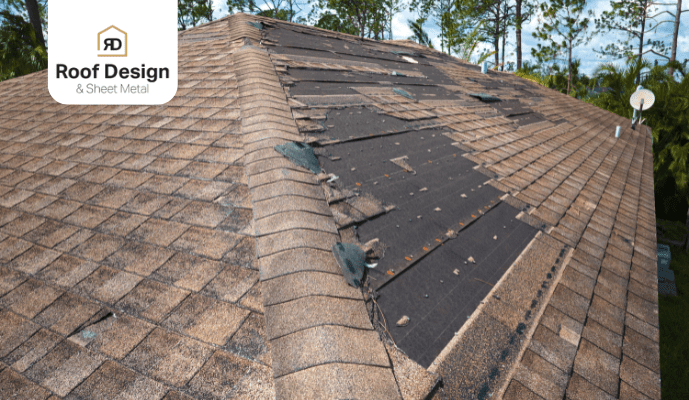When it comes to protecting your home from the elements, a few aspects are as crucial as a quality roof installation. A properly installed roof acts as your home’s first line of defense against extreme weather conditions, from heavy rain to snowstorms, hail, and intense heat. This guide will explore how a durable roof, combined with the right roofing materials, can ensure long-lasting protection for your home, even in the most unforgiving climates.
Understanding the Importance of Roof Installation
A new roof installation isn’t just about aesthetics or increasing your home’s resale value. It’s an investment in safety and longevity, particularly when you live in an area prone to extreme weather. The roof installation process involves several essential steps that, when done correctly, can shield your home from the harshest weather.
Key considerations for any roofing project include choosing the appropriate roofing material, ensuring the correct application of roofing nails, and adhering to local building codes. Whether you’re planning a diy roof installation or hiring a roofing contractor, understanding these factors is critical to ensuring your home’s long-term protection.
The Role of Roofing Materials in Weather Protection
Selecting the right roofing materials is pivotal for weather resistance. Whether you opt for asphalt shingles, clay tile roofs, or metal roofs, each type of material offers unique advantages against specific weather conditions.
-
Asphalt Shingles: These are the most common and affordable option. They perform well in various weather conditions but are particularly effective in areas with moderate climates. Asphalt shingle roofs are resistant to wind and can handle heavy rainfalls with the help of properly installed drip edge and starter shingles.
-
Clay Tile Roofs: Known for their durability and fire resistance, clay tile roofs are popular in regions that experience extreme heat and dry climates. They also offer excellent insulation properties.
-
Metal Roofs: These are incredibly durable and can withstand high winds, heavy snow, and even hail. Metal roofing is perfect for areas that experience a mix of severe weather patterns throughout the year.
How a Proper Roof Installation Protects Against Wind Damage
Strong winds can wreak havoc on an inadequately installed roof. During a storm, uplift pressure can cause old shingles or even the entire roof to lift off. Ensuring a proper installation is crucial in preventing wind damage.
A well-installed roof must account for key elements like roof trusses, roof decking, and the secure application of roofing nails. If these components aren’t properly secured during the installation process, your roof could fail under extreme wind pressure. Roofing shingles, particularly ridge cap shingles, should be installed with extra attention to ensure they can resist the force of wind, keeping your home protected.
Safeguarding Your Home from Heavy Rain and Snow
Rain and snow are common weather culprits that can cause roof leaks and structural damage. A high-quality roof installation ensures water is effectively diverted off the roof, reducing the risk of leaks. This is where components like the roof deck, roofing nails, and drip edge play a significant role.
In snowy conditions, ice dams can form along the roof’s edge, leading to water backing up and penetrating the roof deck. To avoid this, installing a waterproof underlayment during the roof installation process is crucial. Additionally, the correct sloping of the roof ensures that snow slides off rather than accumulating, which reduces the chances of structural damage or collapse.
Roofing Materials That Provide Hail Resistance
Hail can puncture weak roofing materials, causing significant damage that could lead to costly roof repairs or even a full roof replacement. To mitigate this risk, consider materials like metal roofs or impact-resistant shingles. These are designed to withstand the impact of hailstones without cracking or breaking.
-
Asphalt Shingles: While regular asphalt shingles are not always ideal for hail-prone areas, there are impact-resistant varieties that offer better durability.
-
Metal Roofing: Metal is one of the best options for hail resistance, as it can endure impacts without sustaining visible damage.
Heat Protection with Reflective Roofing Materials
High temperatures can accelerate the wear and tear of roofing materials, particularly in areas that see intense sunlight for prolonged periods. A roof installation that uses reflective materials, such as cool roofing systems or light-colored roofing shingles, can help reduce the heat absorbed by the roof.
This, in turn, lowers the temperature inside your home, reducing energy costs and preventing heat-related roof damage. Clay tile roofs, with their natural insulation properties, are also excellent choices for regions that experience excessive heat.
How a Roofing Contractor Ensures Long-Term Weather Protection
Hiring a certified roofing contractor is one of the best ways to guarantee that your roof installation will withstand the test of time and extreme weather conditions. A professional will have in-depth knowledge of the roof installation process, ensuring that the correct materials are used and that they are installed following industry best practices.
A professional roofing contractor will also assess the condition of your roof deck and roof decking, ensuring that there are no underlying issues before laying down new materials. They will also ensure the application of proper ventilation, which is essential for preventing issues like mold growth or structural rot due to trapped moisture.
When to Consider a Roof Replacement
If your old roof has sustained extensive damage or has reached the end of its lifespan, a roof replacement may be necessary. Signs like missing shingles, sagging, or frequent leaks indicate that it’s time to consider a new roof installation.
Choosing new, more durable roofing materials during a roof replacement can enhance your home’s ability to withstand future storms. Look for impact-resistant asphalt shingles, reflective roofing for heat protection, or durable metal roofs for long-lasting weather resilience.

The Importance of Regular Roof Maintenance
Even the best-installed roof requires regular maintenance to ensure its longevity and weather resistance. Regular inspections, especially after storms, can help catch issues early, such as loose roofing nails or damaged starter shingles, before they become more serious. Regular upkeep not only extends the life of your roof but also ensures that it remains effective in protecting your home from the elements.
Conclusion
A quality roof installation provides critical protection against extreme weather conditions, safeguarding your home and family. By selecting the right roofing materials, ensuring a proper installation process, and hiring a certified roofing contractor, you can enhance your home’s resilience to wind, rain, snow, hail, and heat.
If you’re in need of a new roof installation or are looking to replace your old roofing material, consider Roof Design Naples. With years of experience and a reputation for high-quality work, Roof Design Naples ensures your roof is installed to withstand even the harshest weather conditions. Contact them today for all your roofing needs and protect your home for the long term.

